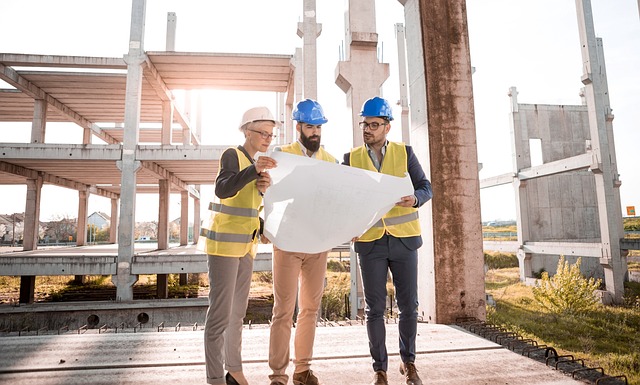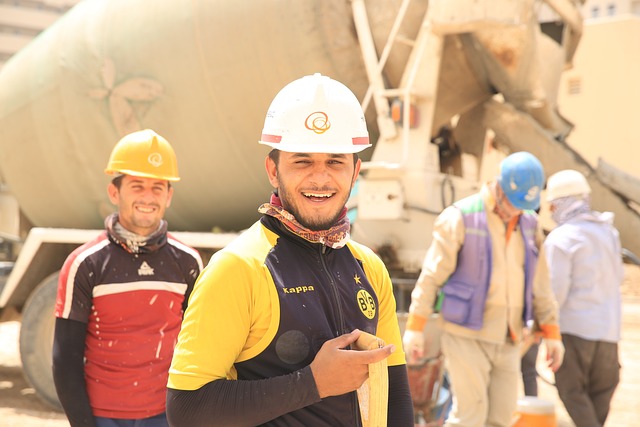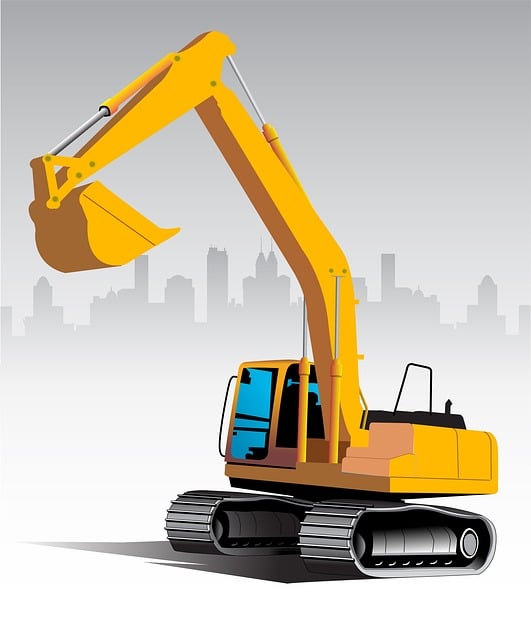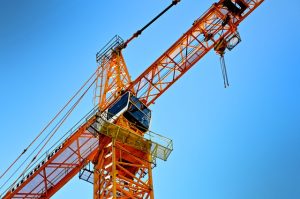High-quality flashlights play a vital role in ensuring the safety and efficiency of construction workers, particularly during night shifts or in poorly lit areas. They prevent accidents by providing clear visibility, enabling prompt identification and response to emergencies, and adapting to various tasks with adjustable intensity settings and long battery life. Advanced features such as water resistance and impact resistance make them ideal for both indoor and outdoor conditions. The importance of these flashlights in construction cannot be overstated; they are not merely tools but crucial safety equipment that meets the unique demands of construction work. A commitment to maintaining these flashlights ensures they remain a reliable source of illumination, fostering a culture of safety and contributing to the overall productivity of construction sites. Investment in durable equipment paired with comprehensive training programs is essential for worker safety and operational efficiency. Flashlights For Construction Workers are an indispensable part of modern construction practices, enhancing the ability to work safely and effectively in all lighting conditions.
title: Enhancing Construction Site Safety with Advanced Flashlights for Workers
In the complex and often hazardous environment of construction sites, the clarity of illumination is not just a preference—it’s a necessity. Adequate lighting not only safeguards worker well-being but also ensures productivity and compliance with safety regulations. This article sheds light on the critical role of flashlights in elevating construction site safety. We delve into essential features to look for in flashlights designated for construction workers, best practices for their use during night shifts, and how the right lighting can prevent accidents, as demonstrated by real-world case studies. Additionally, we explore selecting the appropriate type of flashlight for diverse construction settings and the importance of training and maintenance to keep these tools dependable. Illuminate your work site with the latest in flashlights designed specifically for construction professionals—a bright investment in safety and efficiency.
- Understanding the Importance of Proper Illumination on Construction Sites
- The Role of Flashlights in Enhancing Construction Site Safety
- Key Features to Look for in Flashlights for Construction Workers
- Best Practices for Using Flashlights During Night Shifts
- Case Studies: How Quality Flashlights Have Prevented Accidents on Construction Sites
- Selecting the Right Type of Flashlight for Different Construction Environments
- Training and Maintenance: Ensuring Your Crew's Flashlights Stay Reliable
Understanding the Importance of Proper Illumination on Construction Sites

Proper illumination is a cornerstone of safety on construction sites, serving to mitigate risks and enhance worker performance. Inadequate lighting can lead to accidents and decreased productivity, making flashlights for construction workers an indispensable tool in the arsenal of site safety equipment. These portable lights not only facilitate navigation around the site during nighttime or low-light conditions but also help in inspecting work areas, reading schematics, and performing precise tasks that require a clear line of sight. The right lighting ensures that construction workers can detect potential hazards early, such as uneven surfaces, loose materials, or obstacles in their path, thereby reducing the likelihood of falls, trips, and other common accidents on site. Moreover, flashlights for construction workers are designed to be durable and reliable, with features such as high lumen output, long battery life, and robust construction to endure the demanding conditions typical of a construction environment. By ensuring that each worker has a reliable flashlight, sites can maintain safe operational practices even when lighting from external sources is insufficient or unavailable. The strategic placement of these lights, combined with personal flashlights, creates a safer work environment where visibility is not a concern, and every worker can perform their duties with optimal safety measures in place.
The Role of Flashlights in Enhancing Construction Site Safety

Flashlights for construction workers serve as indispensable tools on construction sites, enhancing safety and efficiency in various ways. Their role is multifaceted; from illuminating dark areas where work must be performed to signaling hazards or changes in the work environment. In low-light conditions, which are common on construction sites, flashlights provide the necessary visibility to prevent accidents such as trips, falls, or the misuse of tools. They are instrumental in ensuring that workers can see potential dangers and that their own presence is visible to others, reducing the risk of injury to themselves or colleagues. Additionally, flashlights equipped with high-intensity LEDs can light up large areas effectively, allowing for more precise and careful work. The versatility of these lighting devices means they are compact enough to be carried on person yet powerful enough to outshine temporary lighting setups in less critical areas. Their role is not only to enhance visibility but also to support the overall safety protocols on-site by acting as a first line of defense against darkness-related risks, thus making flashlights for construction workers a vital component in the safety infrastructure of any construction project.
Key Features to Look for in Flashlights for Construction Workers

When selecting flashlights for construction workers, it’s crucial to prioritize durability and reliability, as these tools are often subjected to harsh environments and heavy usage. A high-impact resistant design ensures the flashlight can withstand accidental drops or rough handling without failing, which is essential for sites where tools are frequently used in challenging conditions. Additionally, a construction worker’s flashlight should be equipped with a robust, weatherproof body, capable of functioning in rain, dust, and even mud. For tasks that require both hands, models featuring a tail switch for one-handed operation can be particularly beneficial, allowing workers to activate or change modes without putting their work down or fumbling for a button.
Moreover, the brightness level is a key feature when it comes to flashlights for construction workers. A high lumen output enables workers to see further into dark spaces, which is vital for inspecting, repairing, or navigating complex structures at night or in low-light conditions. Lumens aside, a flashlight’s beam should be focused and directional to cut through the darkness effectively without causing disorienting glare. LED technology is preferred for its long lifespan and energy efficiency, reducing the need for frequent battery changes or replacements. Additionally, flashlights with multiple brightness settings can conserve power when full illumination isn’t necessary, extending runtime and ensuring the light is ready when needed most. Features like impact resistance, a secure grip, and long battery life are paramount to ensure construction workers have a reliable source of lighting for all their on-site needs.
Best Practices for Using Flashlights During Night Shifts

construction sites present unique safety challenges, particularly during night shifts when visibility is significantly reduced. To maintain a safe work environment, flashlights for construction workers are indispensable tools. It is crucial to implement best practices when using these lighting devices to ensure both individual worker safety and the overall integrity of the site. Firstly, each worker should be equipped with a reliable flashlight that meets the necessary specifications for brightness and durability. These flashlights should be easily accessible, either through personal carry or designated toolboxes, to provide immediate illumination when needed.
Secondly, workers must receive training on the correct techniques for using flashlights effectively. This includes understanding how to direct the beam to avoid blinding themselves or others, as well as how to conserve battery life by utilizing the flashlight’s various modes if available. Additionally, it is important to establish protocols for emergency situations, such as a power outage or equipment failure, where flashlights will be the sole source of light. Regular maintenance checks should also be conducted to ensure that all flashlights are in working order and batteries are fully charged before the start of each shift. By adhering to these best practices, construction workers can significantly reduce the risk of accidents and improve overall site safety during night operations.
Case Studies: How Quality Flashlights Have Prevented Accidents on Construction Sites

flashlights for construction workers played a pivotal role in enhancing safety on construction sites, as evidenced by several case studies. In one instance, a project at an urban development site, where construction continued through the night, the workers utilized high-quality flashlights to illuminate their work areas. This proactive measure significantly reduced the risk of tripping or falling, common hazards in low-light conditions. The focused beams allowed for clear visibility of the workspace, preventing accidents caused by unseen obstacles or uneven terrain. Furthermore, these flashlights were instrumental during an emergency situation where a gas leak was detected. Their bright light enabled immediate and precise identification of the leak’s source, allowing for prompt action to mitigate potential disasters. The construction site’s safety protocol was thus reinforced by the simple yet effective use of durable flashlights, underscoring their importance in maintaining a secure environment for all workers involved.
Another case study highlighted the role of advanced flashlights equipped with features like adjustable intensity settings and long battery life. On a large-scale infrastructure project, these high-tech flashlights were crucial in ensuring that every corner of the site was safely navigable at any time of day or night. The adjustable beam intensities catered to different tasks, from finer detail work requiring a narrow beam to broader area inspections that benefited from a wider light spread. This adaptability not only improved efficiency but also eliminated blind spots where potential hazards could lurk. The longevity of the battery life in these flashlights meant that workers no longer faced abrupt interruptions due to power depletion, which was a common issue with less reliable lighting tools. As a result, the construction project continued seamlessly, even under the cover of darkness, with enhanced safety and productivity. These case studies serve as clear testaments to the value of quality flashlights in preventing accidents on construction sites.
Selecting the Right Type of Flashlight for Different Construction Environments

When it comes to ensuring the safety and efficiency of construction workers, especially in low-light or dark environments, flashlights for construction workers are indispensable tools. The right type of flashlight not only enhances visibility but also prevents accidents that could arise from navigating unlit spaces. Construction sites often present a variety of conditions, from dimly lit interiors to open-air work in the absence of sunlight. For indoor tasks, such as electrical or plumbing work, a compact and durable flashlight with a strong beam is essential. Look for flashlights with LED technology, as they offer a bright light that uses less power and lasts longer than traditional bulbs. These are often equipped with adjustable focus features, which allow workers to switch between a wide, area-covering beam and a narrow, long-distance spotlight, depending on the task at hand.
For outdoor work, especially in areas where construction coincides with nighttime hours, high-intensity flashlights or headlamps that provide hands-free illumination can be particularly beneficial. These are designed to cut through the darkness and have high lumen outputs. They should also feature impact-resistant bodies and waterproof design to withstand the harsh conditions commonly found on construction sites. Additionally, when working at heights or in areas where both hands are required for tasks, a flashlight with a floatable or shock-resistant design can ensure that workers have a reliable light source without compromising their safety or the integrity of their work. It’s crucial to select flashlights that comply with industry standards and certifications, ensuring they meet the necessary requirements for safety and performance on construction sites.
Training and Maintenance: Ensuring Your Crew's Flashlights Stay Reliable

In the realm of construction, where visibility can dictate safety and efficiency, flashlights for construction workers are more than just tools; they are vital instruments that ensure tasks are carried out under optimal lighting conditions. To maintain a high standard of safety on-site, it is crucial to invest in quality flashlights and implement a robust training program. These flashlights must withstand the rigorous demands of a construction environment, which means regular maintenance checks are indispensable for their longevity. Each member of the crew should be trained not only in the proper handling and use of these devices but also in their upkeep to prevent malfunctions during critical operations. Regular inspections and routine cleaning of flashlights can significantly prolong their functional life, reducing the likelihood of failure when it is most needed. Training workers to recognize signs of wear and tear allows for proactive maintenance, ensuring that each light remains a dependable beacon in low-visibility conditions. This commitment to training and ongoing maintenance fosters a safety culture where every worker understands the importance of their equipment and takes responsibility for its performance. By prioritizing these practices, construction sites can minimize risks and maintain high standards of operational safety.
In conclusion, robust illumination is a critical component of construction site safety, with flashlights for construction workers playing an indispensable role in ensuring night shift operations are conducted under safe and clear conditions. Selecting the appropriate flashlight tailored to different construction environments and maintaining them through consistent training and upkeep are essential practices that contribute to a safer worksite. The case studies presented underscore the effectiveness of high-quality flashlights in preventing mishaps, proving their worth as more than just a tool but a vital safety measure. Construction firms should prioritize the procurement and maintenance of flashlights for construction workers to safeguard their teams and uphold operational integrity. With the right equipment and protocols in place, construction sites can remain bright, secure, and productive even under the cover of darkness.
